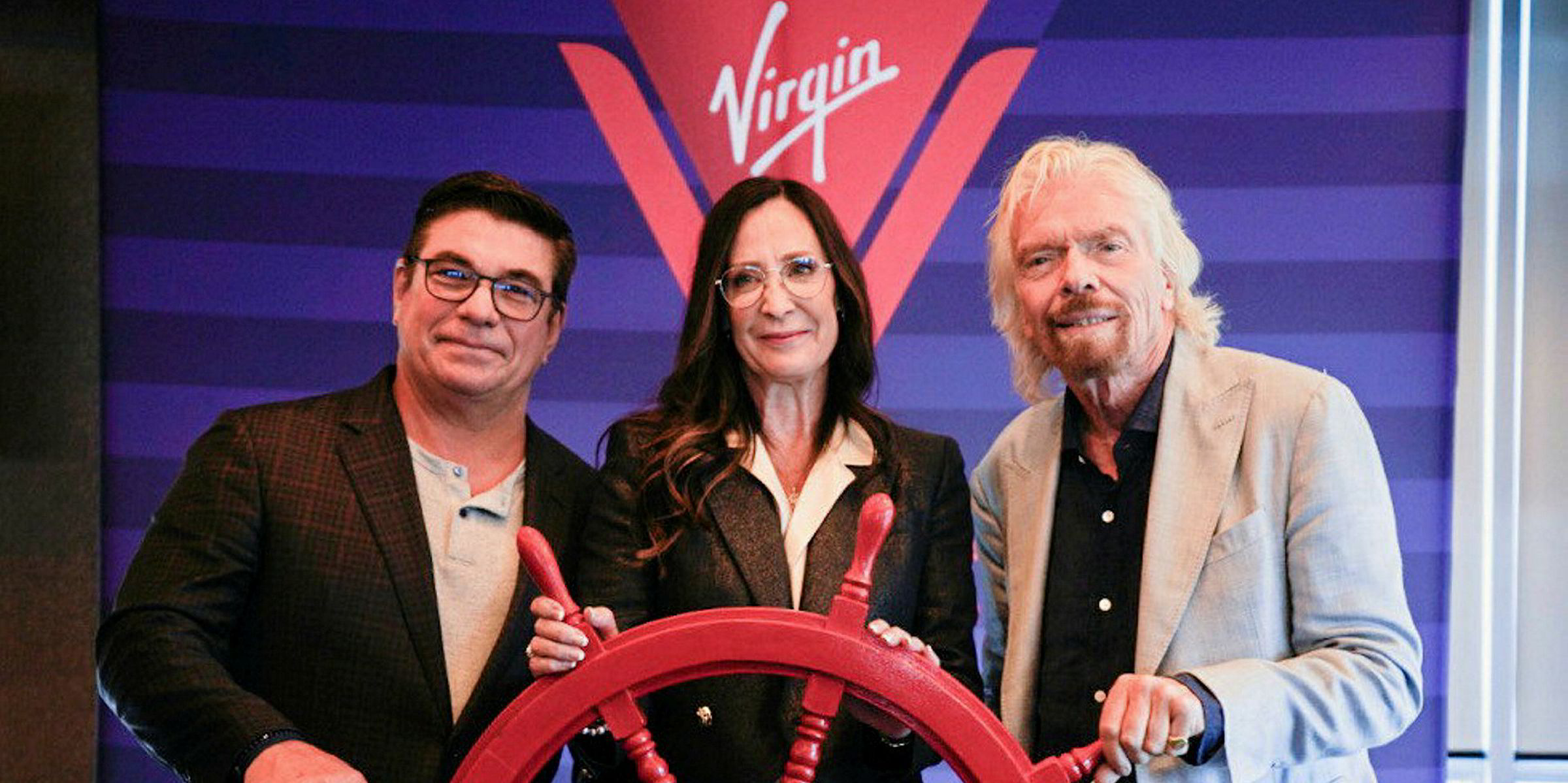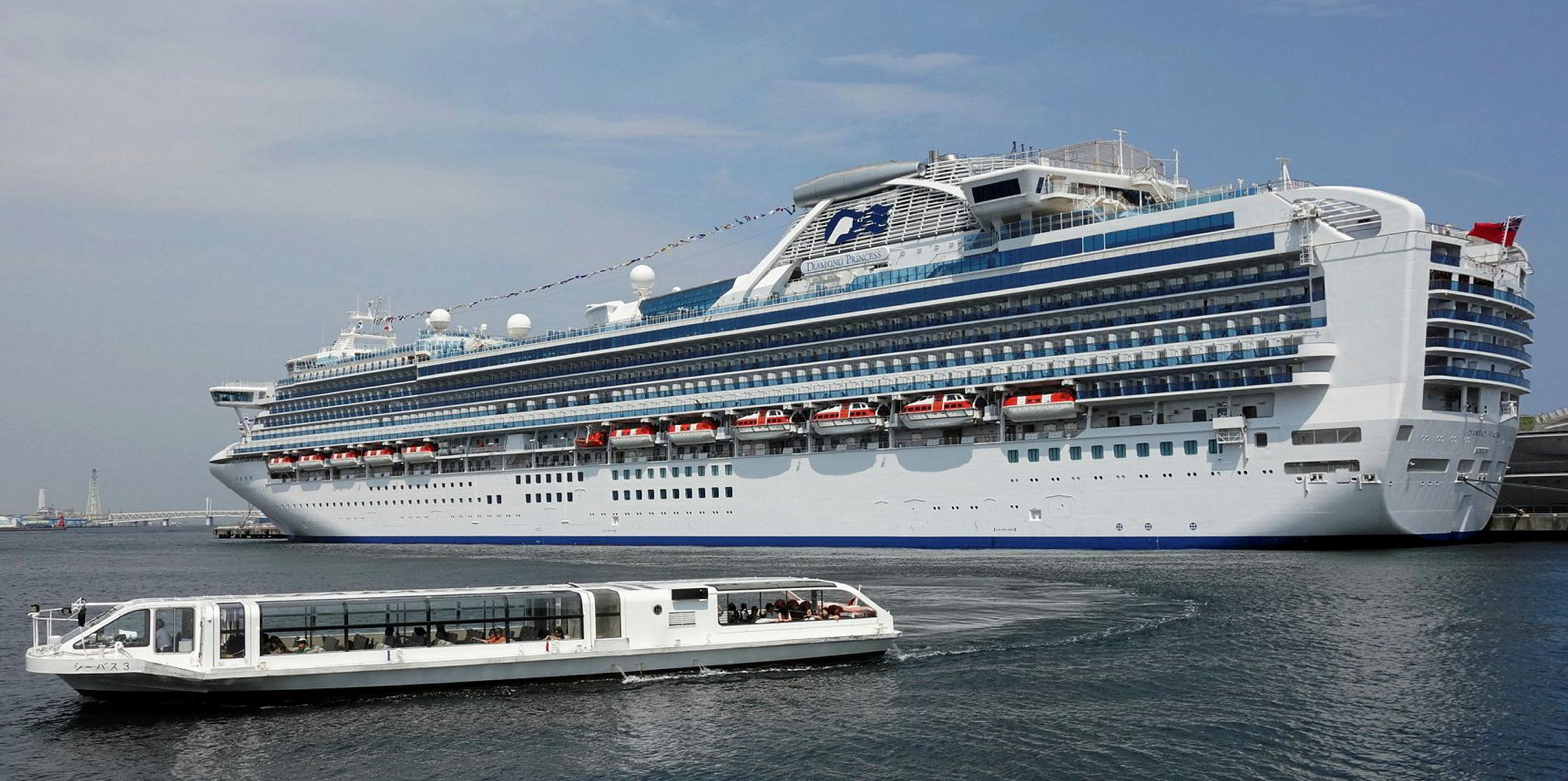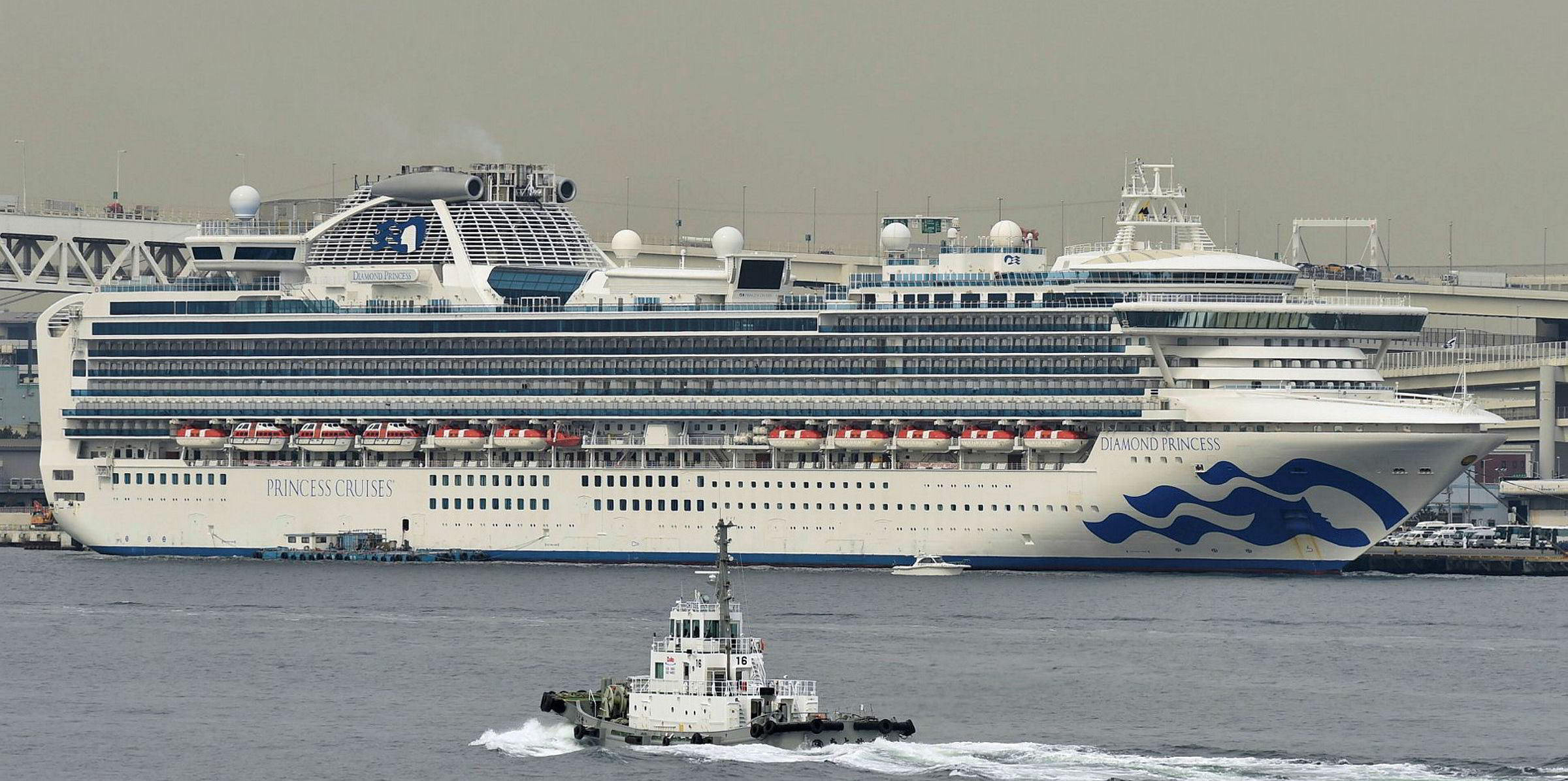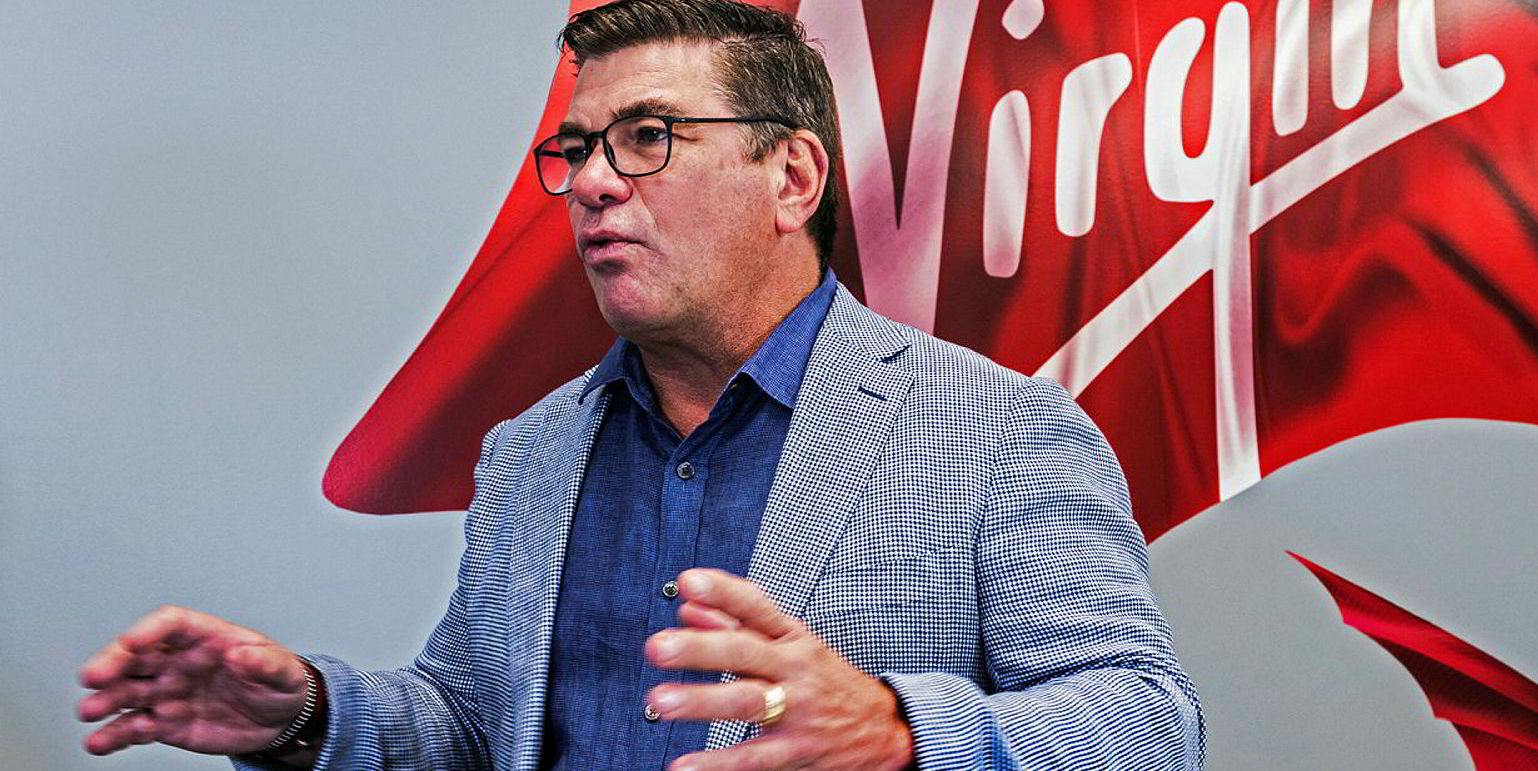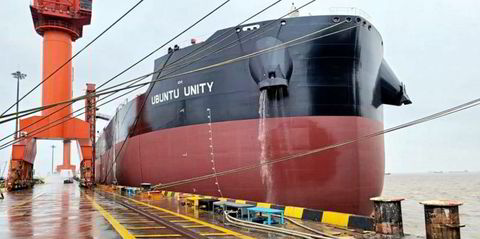It is hard to imagine a worse time to launch a marketing campaign for an industry that has been badly hit by a global health emergency. But if anyone is going to do that, it would be Sir Richard Branson — a man who has investors queuing up to put money into sending people off into space.
The British knight took his first vessel, the 108,100-gt Scarlet Lady (built 2020), to Liverpool in north-west England this week to show off the hardware and concept behind his Virgin Voyages.
It’s a suitable port city — home of the once-booming transatlantic passenger trade and, thanks to the Beatles, a centre of rock ‘n’ roll, which made Branson his first fortune as a record shop owner.
The media was suitably wowed by the Scarlet Lady’s Razzle Dazzle cocktail bar, the Squid Ink body piercing parlour and the Mega RockStar Suites, a snip at almost $20,000 for three nights.
Audacious pitch
This is the kind of audacious pitch that Branson hopes will woo a younger adult holidaymaker onboard this vessel — and the rest of his fleet.
The Scarlet Lady, which was built by Fincantieri, has 1,330 cabins and will carry 2,770 passengers, mainly on trips round the Caribbean from a base in Miami. Three more ships are on their way — one every 12 months up to 2023.
Virgin Voyages is the newcomer taking on the established giants — Carnival Corp, Royal Caribbean Cruise Line and Norwegian Cruise Line Holdings — partly by pushing its cool modern image, underscored by nods to “green” and equal opportunities agendas.
The carbon-neutral cruising claim is partly built around engine efficiency and barring single-use plastics. But it also involves carbon offsetting, a controversial concept in the eyes of some environmentalists.
The commitment to gender balance seems more soundly based, given that the master of the Scarlet Lady is a woman, Wendy Williams. She is said to have hired a raft of other females to take on senior management roles on the ship.

The cruise industry is ripe for the razzle-dazzle marketing techniques that Branson has brought to trains, planes and soon space travel. (Shares in his Virgin Galactic company have risen more than 200% since a stock market launch last October.)
Demand for cruise holidays has been on an upward trajectory for a decade in the US, and there is enormous untapped demand in Europe and Asia, especially China.
The only cloud on the industry’s horizon seemed to be its own success: the sheer scale of cruiseship visits and pollution from engine exhausts were causing tension with local politicians in key Mediterranean ports, such as Venice and Dubrovnik.
But all of these worries have been knocked into a corner by coronavirus and the fact that it quickly infected passengers on Carnival’s 115,900-gt Diamond Princess (built 2004).
Two deaths
Two people have died and more than 600 have confirmed cases of the Covid-19 virus linked to the ship, which was put in quarantine in Japan.
An elderly woman onboard the 82,900-gt Westerdam (built 2004), operated by Holland America Line (a Carnival subsidiary), has also tested positive.
Health authorities are trying to track down other Westerdam passengers who may have come into contact with her, amid fears that they might be spreading the virus around the world.
The big three cruise companies have already warned that Covid-19 is likely to wipe more than $500m off their combined earnings this year.
They have cancelled some cruises to Asia for much of this year and had been expected to deploy the vessels to Europe.
But now operators face the latest virus outbreak in Italy, a centre of European cruising, with fears that it too could end up as a no-go area.
Coronavirus is threatening severe financial and reputational damage to a sector associated with glamour, relaxation and fun.
Even Branson might find it easier in the short term to sell the idea of trips to the moon than luxury cruises.
